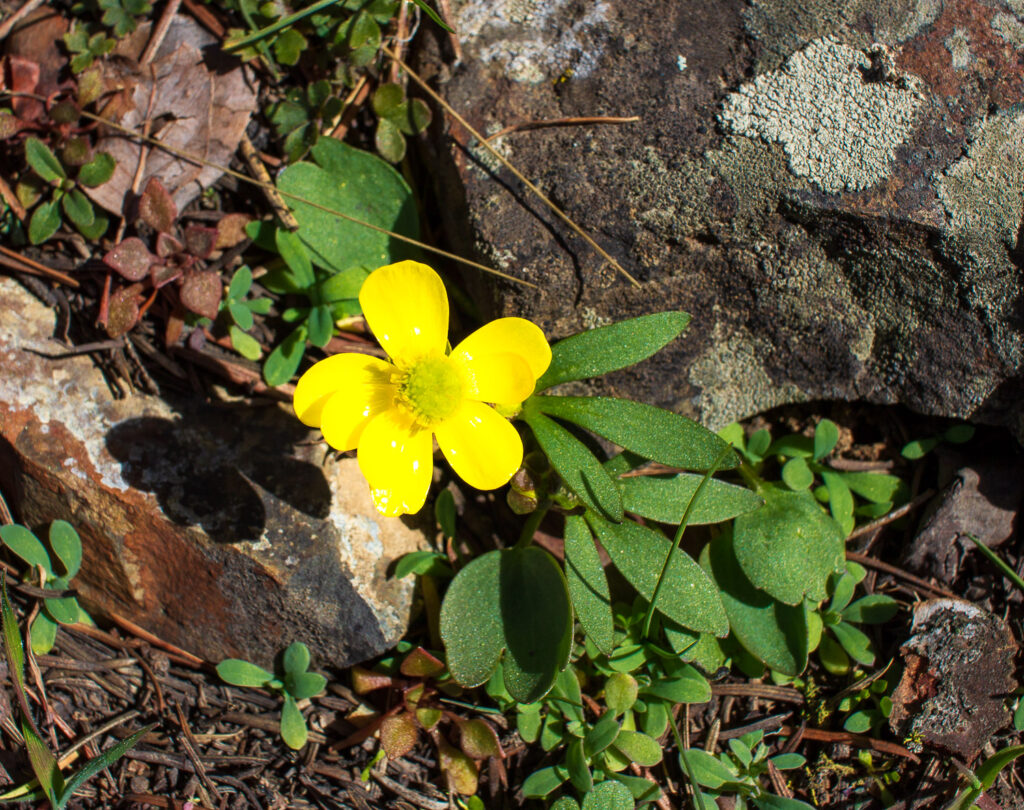
Death, life, and hope: The First Flower of Spring
I sincerely hope a first-time visitor to this blog will not judge my photographic skill according to this simple image. The composition is weak. It tells no story, unless you are reading this text, and the purpose of a photograph, to me, is to tell a story without any other props or words. And, there is a story attached to it, which I will relate here.
This image was captured on an early spring outing in 2015 to capture the first flower of spring. After a brutal winter in Spokane, I needed to see, to verify, that the Earth was indeed renewing itself. I traveled to Hog Lake; a small lake formed in the aftermath a 15,000-year-old flood that formed the Channeled Scablands of eastern Washington. The flood came out of Montana and caused a 2,000-foot wave to completely transform the landscape south and west of Spokane, as well as to carve out the Columbia River Gorge. The resulting flat landscape is as awesome as it is minimalistic.
Hog Lake had the closest hiking trail that I could find to my home. The trail climbs steeply out of the lake shore and rises several hundred feet over decomposing basalt lava. The area looks dead after five hard months of snow and freezing wind that further scours the scabland. Perhaps that is way I chose it. I needed to see how life renewed itself after a brutal and deadly winter, similar to the winter in my heart.
And there it was, the first flower of spring. I stood over it and marveled at how such beauty could emerge out of cold and rotting remains of the previous seasons. I was amazed at the perseverance of this little flower to force itself out of the basalt dust and the corpses of last summer’s life. Yet, there it was: strong, undaunted, fresh, and ready to live in good faith even though genetically fated to die in a only few months. My first flower of spring. Life finds a way. Life continues. If it could come back, then maybe I could, too.